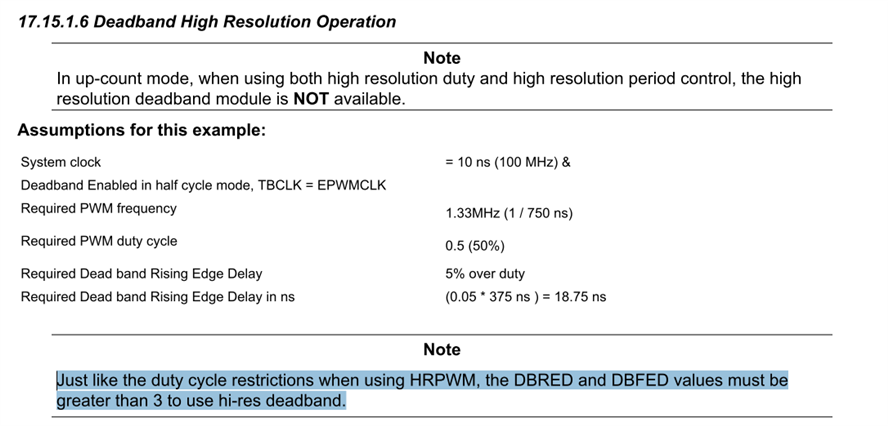Hi Champs,
Here are some question about dead band resolution
1.
In TRM, it says "Just like the duty cycle restrictions when using HRPWM, the DBRED and DBFED values must be greater than 3 to use hi-res deadband."

And TRM also says "When using DBREDHR or DBFEDHR, DBRED and/or DBFED (the register corresponding to the edge with hi-resolution displacement) must be greater than or equal to 7."

So if we want to use a high-resolution dead band, how much should the values of DBRED and/or DBFED be greater than? 3 or 7?
2. Can the high-resolution dead band module of F280025 be used to realize dead-zone control with a range of 0-100ns and a precision of 1ns? Customer now need to realize it. If the answer of the previous question is 7, according to my understanding, the value of the dead zone that can be realized in the range of 0-70ns is only 10ns, 20ns, 30ns... because only DBRED and DBFED can be used. Do we have other method to realize 1ns precision in the range of 0-70ns? Thanks!
Best Regards,
Julia


